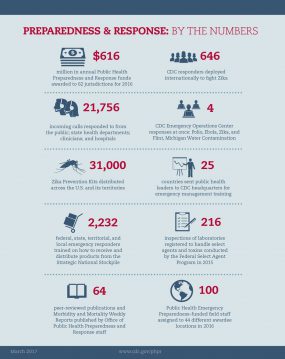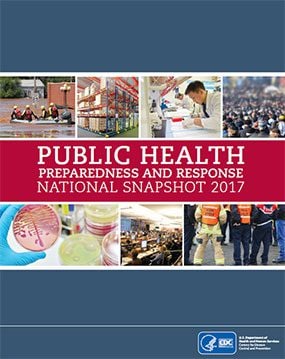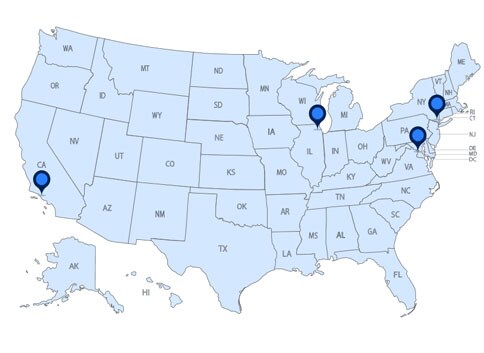
CDC National Snapshot
Prepare. Respond. Connect…and Why it Matters
CDC is committed to strengthening the nation’s health security by protecting against public health threats, whether they begin at home or abroad, or if they are natural or man-made. We know that when we don’t respond quickly and to scale, outbreaks become epidemics, natural disasters become crucibles for illness, and the human toll of terrorist attacks can mount.As one of the nation’s most critical public health investments, we have an obligation to capture our work annually and share lessons that inform our strategy over time. One way we do this is through our annual report, referred to as the National Snapshot for CDC’s preparedness and response investments.
Why it Matters

CDC is committed to strengthening the nation’s health security by protecting against public health threats, whether they begin at home or abroad, or if they are natural or man-made. We know that when we don’t respond quickly and to scale, outbreaks become epidemics, natural disasters become crucibles for illness, and the human toll of terrorist attacks can mount.
State and local health departments must stand ready to handle many different types of emergencies that threaten the health and resilience of families, communities, and the nation. Having people who know what to do, and having the resources in place to allow them to do their jobs, saves lives.
As one of the nation’s most critical public health investments, we have an obligation to capture our work annually and share lessons that inform our strategy over time. One way we do this is through our annual report, referred to as the National Snapshot for CDC’s preparedness and response investments.
Public Health Preparedness and Response National Snapshot 2017
The Public Health Preparedness and Response National Snapshot 2017 demonstrates how federal investments enhance our nation’s ability to respond to public health threats and emergencies. It is our most recent annual report where we present activities that occurred during 2015 and 2016. We spotlight select examples of our work that help inform our actions and investments going forward.
What is different about the 2017 report, compared to prior years, is that it does not include the Public Health Emergency Program (PHEP) state fact sheets in the body of the report. You can find state by state information online and available for download here.
Past Preparedness Reports from 2008-2016 can be found here.
Ready for Emergencies
The 2017 Snapshot highlights activities that occurred during 2015 and 2016 in the framework of three priorities. As our work is crosscutting, please read each section to get a full understanding of how our work integrates all levels and disciplines of public health throughout CDC, across sectors, and the globe.
PHEP Funding State Fact Sheets
CDC’s Office of Public Health Preparedness and Response provides funding and technical assistance to build public health preparedness and response capabilities nationwide. Most significantly, the Public Health Emergency Preparedness (PHEP) cooperative agreement provides funding to 50 states, 4 cities, and 8 insular areas. To learn more about PHEP funding for these locations, click on a jurisdiction in the map found here. The tab “Performance Metrics” provides links to the newest data in the 2017 report.





































No hay comentarios:
Publicar un comentario